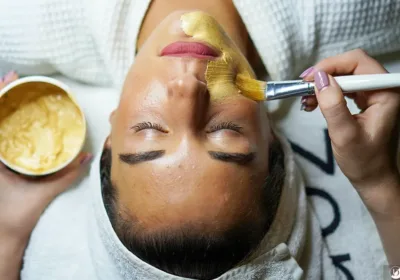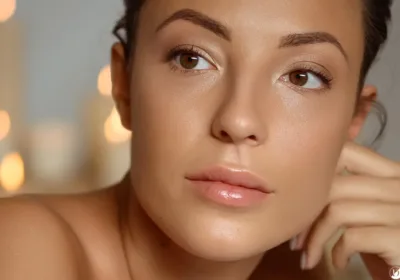Is Dermaplaning Actually Good For Your Skin?

If you’ve ever scrolled through skincare TikTok, you’ve likely seen dermaplaning in action. A gliding scalpel, peach fuzz gone, and a face that instantly looks smoother. But is dermaplaning good for skin, really?
Let’s break down what dermaplaning is, the benefits it promises, and whether it lives up to the hype for your skin.
What Is Dermaplaning?
Dermaplaning is a skincare treatment that involves using a sterile, surgical scalpel to gently exfoliate the top layer of dead skin cells and remove fine vellus hair (aka peach fuzz). It’s typically performed by licensed estheticians.
The process is painless, non-invasive, and requires no downtime, making it a favorite for those seeking a quick skin refresh.
Is Dermaplaning Good For Your Skin?
The short answer: yes — for most people, dermaplaning can be very good for the skin. Here’s why:
1. Exfoliation for a Smoother Complexion
By removing dead skin cells, dermaplaning reveals newer, healthier skin beneath. This results in a smoother texture and a more radiant glow. It can also help reduce the appearance of acne scars and fine lines over time.
2. Better Product Absorption
With the top layer of dead skin out of the way, your serums and moisturizers can penetrate more deeply and work more effectively. That means your entire skincare routine could become more efficient.
3. Makeup Goes On Like a Dream
No peach fuzz = no foundation clinging to tiny hairs. After dermaplaning, many people notice their makeup glides on more evenly and looks airbrushed.
Potential Downsides
Even though dermaplaning is generally considered safe, it’s not for everyone.
- Sensitive or acne-prone skin: If you have active breakouts, rosacea, or extremely sensitive skin, dermaplaning could cause irritation or make inflammation worse.
- Temporary side effects: Some people experience redness, slight sensitivity, or breakouts after treatment — especially the first time.
- Hair myths: Contrary to popular belief, the hair does not grow back thicker or darker. It may feel slightly different due to the blunt edge from shaving, but the texture and color don’t change.
How Often Should You Dermaplane?
The expert estheticians at DaVida Medical & Aesthetics recommend dermaplaning every 3–4 weeks. This is to ensure the treatment align with your skin’s natural cell turnover cycle. Overdoing it can lead to over-exfoliation, which may damage the skin barrier and cause dryness or irritation.
DIY vs. Professional Dermaplaning
For those who don’t think dermaplaning is good for their skin is because they may be using at-home treatments. While at-home dermaplaning tools are widely available, there’s a big difference between a professional-grade scalpel and a drugstore blade. For the safest and most effective results, it’s best to see a licensed pro.
Final Verdict
Dermaplaning is good for the skin for most skin types. It delivers smoother texture, brighter tone, and an instant refresh without the downtime of harsher treatments. As with any skincare routine, though, it’s important to know your skin type. And of course, consult with a professional, and listen to how your skin responds.
If you’re looking for a gentle way to level up your glow, dermaplaning might be worth adding to your beauty lineup.
You may also enjoy reading: Pamper Mom With Luxurious Mother’s Day Med Spa Treatments





